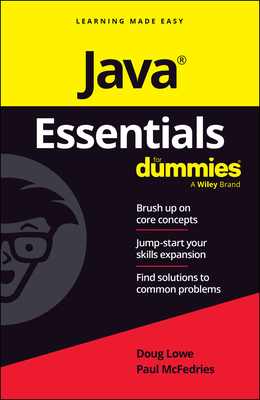Fast Track to EJB 3.0 Using JBoss Training in Rochester
|
We offer private customized training for groups of 3 or more attendees.
|
||
Course Description |
||
| The Enterprise JavaBeans 3.0 specification is a deep overhaul of the EJB
specification that is intended to improve the EJB architecture by
reducing its complexity from the developer's point of view. It leverages
annotations (introduced in Java 5) and Object-Relational Mapping (ORM)
technologies to eliminate the dependence on complex EJB APIs, allow POJO
(Plain Old Java Object) based development, and provide an effective
technology for creating distributed, transactional components, and for
mapping relational data to an object schema. This course provides
thorough coverage of the EJB3 technology - presented in a clear and
effective manner. It starts with the basic concepts and APIs of EJB and
then continues on with complex topics such as message driven beans and
transactions. New concepts such as the use of annotations and the use of
Dependency Injection to initialize references are covered in depth. The
course also includes a solid introduction to developing persistent
entities using the Java Persistence API (JPA). The course uses hands-on
labs and a well-paced approach to make this complex technology
understandable in an accelerated fashion. You will come away with a
comprehensive understanding of EJB and the important issues that need to
be considered to use it in real world applications. Audience: Java
developers who want to use EJB3.
Course Length: 3 Days
Course Tuition: $1290 (US) |
||
Prerequisites |
|
| One year of Java programming experience (or equivalent) is preferred. Knowledge of relational databases and JDBC is strongly recommended. | |
Course Outline |
|
Overview
EJB 3.0
Session Bean Overview
Packaging and Deployment
Dependency Injection
Deployment Descriptors
The EJB Environment
Stateless Session Bean Lifecycle & Interceptors
Stateful Session Beans
The Timer Service
Overview of Messaging Systems
Message-Driven Beans
Message-Driven Bean Lifecycle
Transaction Definition
Transactional System Overview
Transactions in EJB
Security in EJB
Exception Handling
EJB 3 Best Practices
JPA Overview
Mapping a Simple Class
Entity Manager and Persistence Context
Inserting and Updating
Querying and Java Persistence Query Language (JPQL)
Mapping Relationships
Mapping Inheritance
Versioning
More on Querying
Embedded Objects
Java Persistence with Java SE |
Course Directory [training on all levels]
- .NET Classes
- Agile/Scrum Classes
- AI Classes
- Ajax Classes
- Android and iPhone Programming Classes
- Azure Classes
- Blaze Advisor Classes
- C Programming Classes
- C# Programming Classes
- C++ Programming Classes
- Cisco Classes
- Cloud Classes
- CompTIA Classes
- Crystal Reports Classes
- Data Classes
- Design Patterns Classes
- DevOps Classes
- Foundations of Web Design & Web Authoring Classes
- Git, Jira, Wicket, Gradle, Tableau Classes
- IBM Classes
- Java Programming Classes
- JBoss Administration Classes
- JUnit, TDD, CPTC, Web Penetration Classes
- Linux Unix Classes
- Machine Learning Classes
- Microsoft Classes
- Microsoft Development Classes
- Microsoft SQL Server Classes
- Microsoft Team Foundation Server Classes
- Microsoft Windows Server Classes
- Oracle, MySQL, Cassandra, Hadoop Database Classes
- Perl Programming Classes
- Python Programming Classes
- Ruby Programming Classes
- SAS Classes
- Security Classes
- SharePoint Classes
- SOA Classes
- Tcl, Awk, Bash, Shell Classes
- UML Classes
- VMWare Classes
- Web Development Classes
- Web Services Classes
- Weblogic Administration Classes
- XML Classes
Java Uses & Stats
|
Difficulty
|
Popularity
|
Year Created 1995 |
|
Pros
Most Commonly Used:
Great Career Choice:
Android Apps Development:
It Can Run On Any Platform:
Great Supporting IDE's: |
Cons
Uses a Lot of Memory:
Difficulty in Learning:
Slow Start Up Times:
Verbose and Complex Code:
Commercial License Cost: |
| Java Job Market |

Average Salary
|

Job Count
|

Top Job Locations
New York City |
|
Complimentary Skills to have along with Java
- If you are an experienced Java developer, learning a complimentary language to Java should come much more naturally. As an example JetBrains recently created the Kotlin programming language which is officially supported by Google for mobile development. Kotlin compiles to Java bytecode and runs on the JVM; it's purported to address many of Java's shortcomings... |






